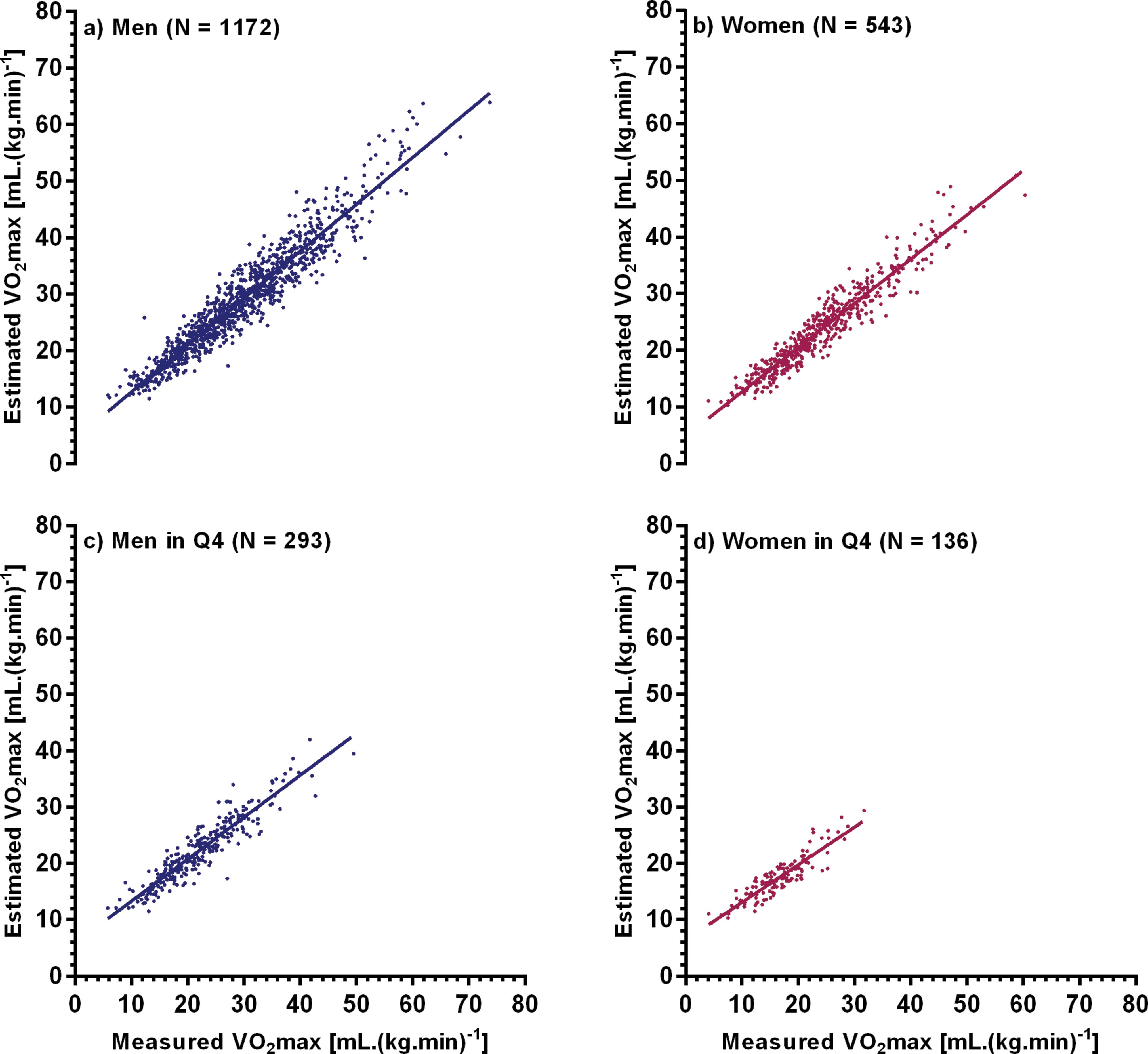OBJECTIVE:
To assess the influence of central obesity on the magnitude of the error of estimate of maximal oxygen uptake in maximal cycling exercise testing.
METHOD:
A total of 1,715 adults (68% men) between 18-91 years of age underwent cardiopulmonary exercise testing using a progressive protocol to volitional fatigue. Subjects were stratified by central obesity into three quartile ranges: Q1, Q2-3 and Q4. Maximal oxygen uptake [mL.(kg.min)-1] was estimated by the attained maximal workload and body weight using gender- and population-specific equations. The error of estimate [mL.(kg.min)-1] and percent error between measured and estimated maximal oxygen uptake values were compared among obesity quartile ranges.
RESULTS:
The error of estimate and percent error differed (mean ± SD) for men (Q1=1.3±3.7 and 2.0±10.4; Q2-3=0.5±3.1 and -0.5±13.0; and Q4=-0.3±2.8 and -4.5±15.8 (p<0.05)) and for women (Q1=1.6±3.3 and 3.6±10.2; Q2-3=0.4±2.7 and -0.4±11.8; and Q4=-0.9±2.3 and -10.0±22.7 (p<0.05)).
CONCLUSION:
Central obesity directly influences the magnitude of the error of estimate of maximal oxygen uptake and should be considered when direct expired gas analysis is unavailable.
Cardiorespiratory Fitness; Obesity; Cardiopulmonary Exercise Testing; Aerobic Fitness; Body Composition

